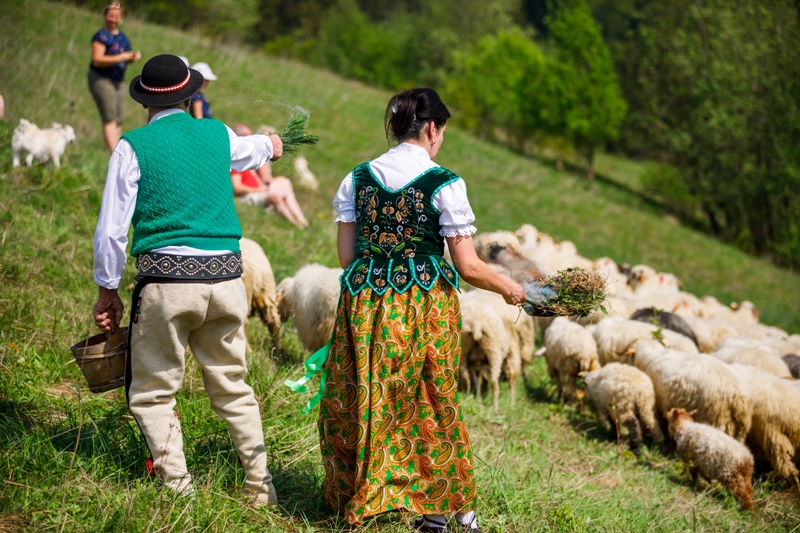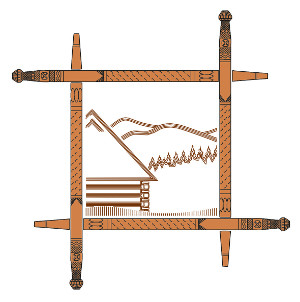
Aktualizację strony internetowej zrealizowano w ramach zadania „Rozwój Szlaku Kultury Wołoskiej w województwie podkarpackim" finansowanego ze środków Województwa Podkarpackiego
The heritage of Wallachian culture
The heritage of Wallachian culture manifests itself in a material and spiritual (immaterial) way. The first category includes huts (shepherds' huts) on which sheep are grazed and sheep's milk processing (cheese making).
The heirs of Wallachian traditions, who are now ambassadors of pastoral heritage, are shepherds - organizers and managers of grazing on the hut. Many of them continue the family tradition, inheriting the profession of shepherd as a result of a multi-generational relay race.
Wallachian material legacy also includes items necessary for the production of cheese ( cutters, gielety, ferule, etc.), elements of shepherd's attire (shepherd's bag, hat, cufflinks, violins, etc.), and cheese products for which Małopolska is famous throughout Europe (including oscypek, bundz, bryndza ). The intangible heritage is, among others specific names regarding shepherd's items, stages of cheese making, points in the field (names of halls, peaks, passes), musical and verbal folklore as well as the ability to produce musical instruments (thrombite, fujar, goblets, bagpipes) and decorate everyday objects. Significant traces of Wallachian culture include, among others toponyms, among which the most common are the names of the mountains, e.g. Magura, Kiczora, Groń, Wołoszyn, Koszysta and the passes, e.g. Przysłop.
Names such as Bryndza, Caban, Fudala, Gajda and Wołoch can also testify to Wallachian influences in Lesser Poland. Over the centuries, these traces have been transformed as a result of assimilation with the culture of the areas inhabited by lowlanders, affecting the formation of language and folklore. Material traces also disappear systematically. Unused glades and pastures are absorbed by the succession of the forest, and former huts are damaged by the weather. Traces of its former hosts are slowly leaving the Carpathian landscape.

Współfinansowane przez Unię Europejską z Europejskiego Funduszu Rozwoju Regionalnego w ramach
Programu Współpracy Transgranicznej Interreg V-A Polska-Słowacja 2014-2020













